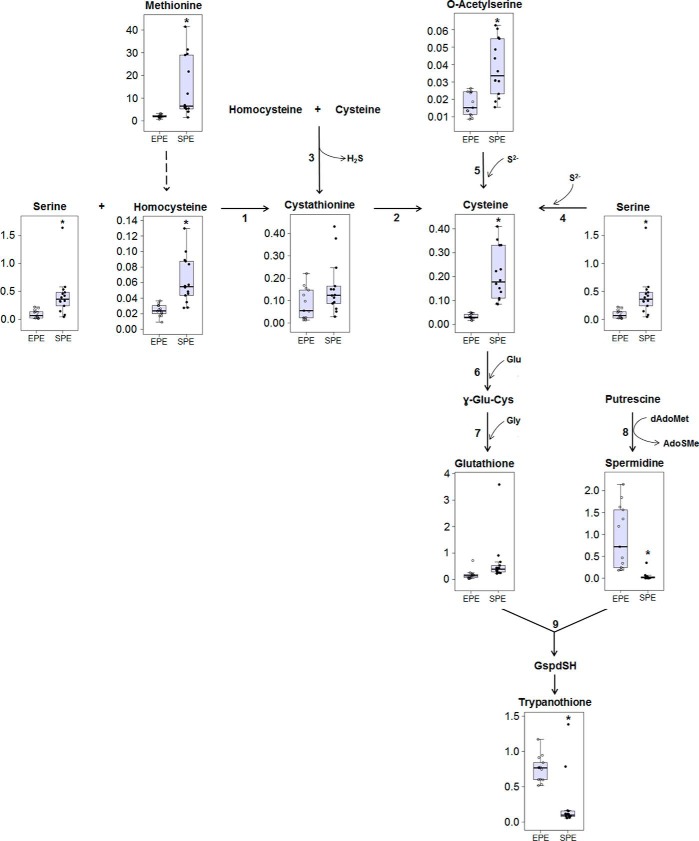Figure 7.
Thiol-containing metabolite levels and cellular redox state in EPE and SPE. Schematic representation of cysteine and trypanothione biosynthetic pathways. The reactions catalyzed by 1 (cystathionine-β-synthase) and 2 (cystathionine-γ-lyase) correspond to the canonical RTP. The metabolic step 3 is also catalyzed by CBS to produce cystathionine and H2S via condensation of homocysteine and cysteine, the latter being the preferred substrate. Reaction 4 illustrates CBS contribution to the de novo synthesis of cysteine by its serine sulfhydrylase activity. Reaction 5 depicts involvement of cysteine synthase and CBS in the de novo synthesis of cysteine, 6, glutamylcysteine synthetase; 7, glutathione synthetase; 8, spermidine synthase; 9, trypanothione synthetase. Dashed arrows represent more than one enzymatic reaction. Values correspond to the metabolite/internal standard area ratio of MS signals detected by MRM normalized to the cell numbers. *, indicates significant differences between EPE and SPE according to the Benjamini and Hochberg test (supplemental Table S2).

